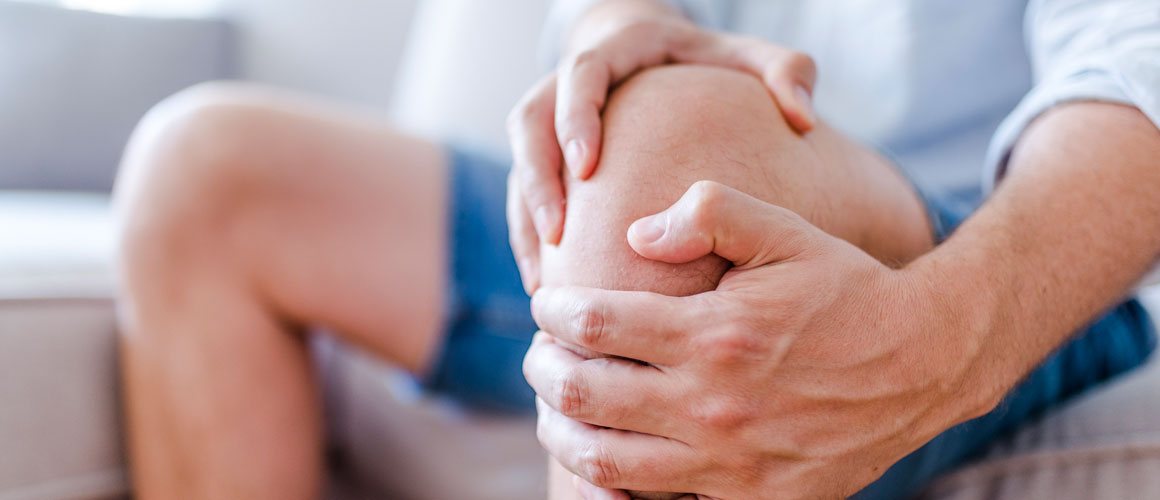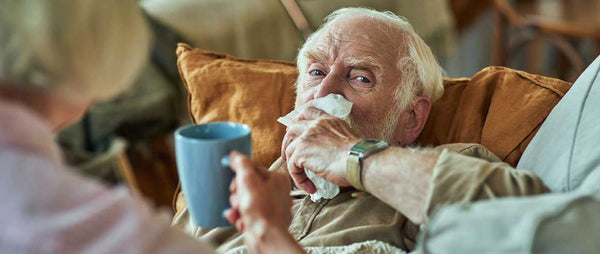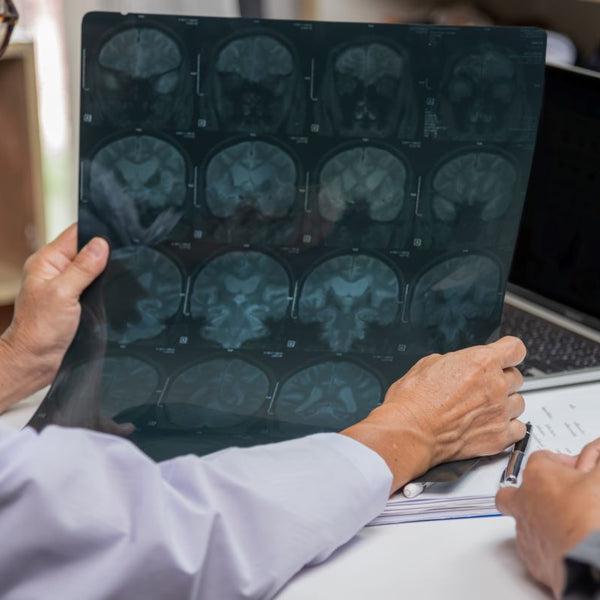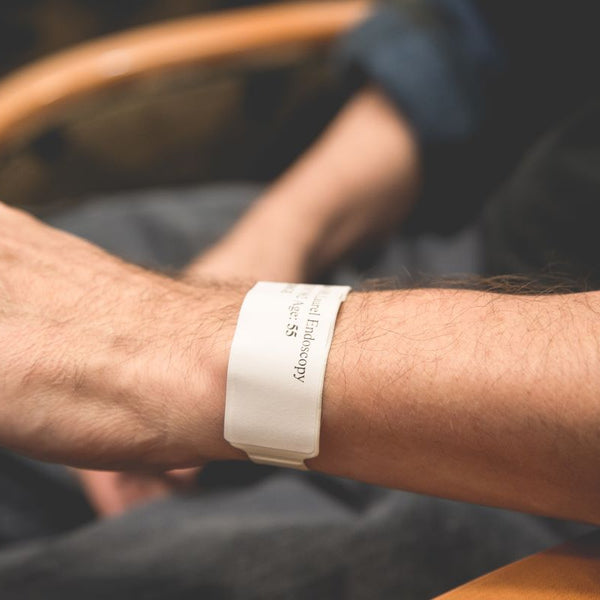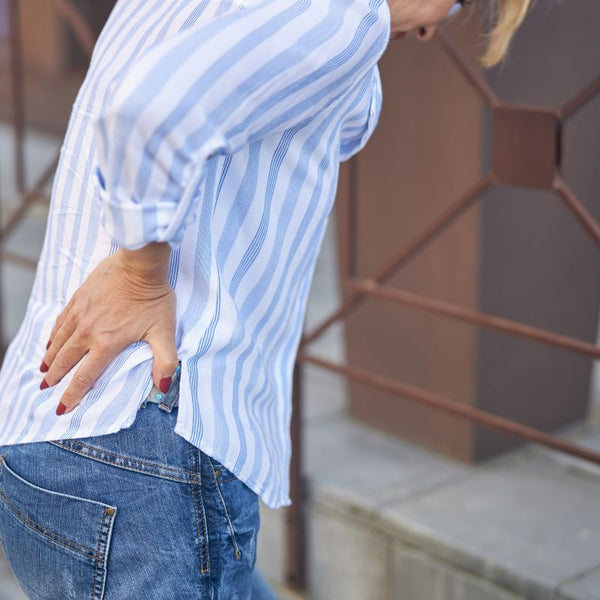Falls can be quite common in people aged 65 and over [1] and, while they often don’t result in serious injury, you may experience quite a few bumps and bruises after an incident like this.
Jump to:
- What causes a bruise?
- Bruising on elderly skin
- How to reduce bruising
- How long do bruises last?
- How do you know when a bruise is serious?
What causes a bruise?
When you bang into something or fall over, the blood vessels under the skin can burst, causing the blood to leak into the tissue and creating the appearance of a dark blemish on the skin (“ecchymosis” is the medical term). You may also experience swelling and pain.
Bruising on elderly skin
As we get older, our skin becomes thinner. This is due to loss of fat and collagen, which is what gives skin its strength and elasticity. As a result, the blood vessels close to the surface of the skin are more likely to become damaged from knocks and bumps.
What causes bruising in the elderly?
Along with thinning skin, there are other reasons why bruising in older adults can be more frequent and severe:
- Weakened blood vessels: Capillaries can become weaker with age and more likely to become damaged. Bruises are formed when they leak blood under the skin.
- Medication: Some medications like aspirin and ibuprofen thin the blood. Some supplements may also thin the blood and while this may not affect younger, healthier people, it can affect older people already more prone to bruising. Vitamin deficiencies can also cause bruising as healthy vitamin levels help your blood clot.
- Medical conditions: Hemophilia, Cushing’s syndrome and a low platelet count are some of the medical conditions that can cause easy bruising. Some chronic diseases can also cause easy bruising, including liver and kidney disease. Any change in the frequency or severity of bruising should be checked by a doctor.
These factors mean that even minor bumps, knocks or scrapes can cause bruising and these bruises may last longer or look more severe.
Bruising on elderly hands
Hands are the most used parts of the body so it is not surprising that we may see more bruises on them as we age. It is easy to hit them against a surface whilst cooking, cleaning or gardening. When we fall, we instinctively use our hands to soften the impact and this can also cause bruising.

Our hands are normally exposed to the elements and sun exposure can cause photoaging. This is premature ageing of the skin, causing it to become thinner and reducing elasticity.
Any skin abnormalities should be checked out by a medical professional, especially if there are other symptoms including nosebleeds or bleeding gums.
Elderly skin bruising prevention
There are some things you can do to reduce bruising, even if it cannot be completely prevented:
- Wear gloves when gardening, doing DIY or handling tools. Long sleeves and trousers can help reduce bruising on your arms and legs
- Maintain a healthy diet that is rich in vitamin C and zinc. This promotes heathy skin and repairs. Dairy, whole grains, seeds and nuts are rich in zinc, whilst fruits are a good source of vitamin C.
- Take care of your skin with sun cream to reduce photoaging and moisturiser to keep skin supple.
- Keep your home safe and reduce clutter and trip hazards to prevent trips, slips and falls
Falls prevention guide
Download our free falls prevention guide or read on for advice on what to do for bruising after a fall.
Get your risk score
Here are some things you can do after a fall to prevent a bruise from developing.

How to reduce bruising
In order to reduce the appearance of bruising, it’s important to try to limit the under-skin bleeding as soon as you’ve fallen or banged yourself. By acting quickly and restricting the bleeding, the size and intensity of the bruise could be reduced.
To do this, there are a few different methods you could try:
1. An ice pack
If possible, apply an ice pack or other cold compress, such as a bag of frozen vegetables, to the area as soon after the incident as you can. This will help to reduce inflammation. To prevent ice burn, you may find it’s better to wrap the frozen item in a tea towel before placing it on the affected area. Alternatively, put the ice pack on over your clothes.
By applying something cold to the injury, the blood vessels in that area cool down and restrict the amount of blood leaking into the surrounding tissue. This can reduce pain and swelling as well as the appearance of the bruise.
You should apply the frozen item for 10 minutes at a time then remove it for 20 minutes. Repeat as necessary.
2. Compression
When you apply pressure to an injured area, you’re preventing the blood vessels from leaking as much blood and you’re also squeezing the damaged tissue to prevent more blood from getting in.
To compress the bruise, you should wrap the area in an elastic bandage that has some resistance. This will also help to reduce the pain and swelling [2].
3. Elevation and rest
The more you move around, the faster your heart pumps and the quicker your blood circulates. In turn, this can make bruises worse. After a fall or injury, it’s good to have a bit of a rest and assess the damage. Avoid massaging the area as this could damage the blood vessels further, causing a larger bruise.
While you’re resting, elevate the affected area so that it’s above your heart. For example, if you’ve hurt your leg at home, you could sit on the sofa and put your foot on a surface that's higher than the sofa.
This could be a dining chair or even a footstool that has a couple of cushions on it to increase its height. When your leg or arm is at a slant like this, gravity will pull the blood away from the bruised area and back to your heart more easily.
For best results, it may be a good idea to combine this technique with the first method, elevating the limb and placing an ice pack on it as well.
4. A heat pack
If you want to improve the appearance of a bruise a few days after an injury, there are some things you can try to speed up the healing process, such as a heat pack. The warmth can expand the blood vessels and improve the circulation in the area. This will help to clear away the blood that is trapped in the tissue.
Place a heat pad or hot water bottle on the bruise for as long as you think necessary. Alternatively, a hot bath will work as well.
5. Arnica
Arnica is a herb that grows in central Europe as well as parts of North America. Research has proven that it can reduce pain, swelling and bruising and it has been used for these purposes for hundreds of years.
Now, instead of making a batch of this remedy yourself, arnica comes in various creams and gels that can be applied a few times a day to a bruised area to reduce its size and make it lighter in colour.
How long do bruises last?
Bruises will generally disappear after a couple of weeks. You may notice a change in colour from a deep purple to blue and then to green or yellow. This is a sign that the area is healing and the bruise should fade altogether.

How do you know when a bruise is serious?
If the bruise is still there after two weeks, you should consult your doctor for advice or examination of the area.
The NHS advises that you should also see your doctor if bruises are appearing for no reason. They are generally caused by injury, but if you haven’t banged yourself, they could be a sign of a vitamin deficiency or diabetes. They can also be a side effect of some medications, such as blood thinners.
If you find that you’re falling frequently at home and are afraid of injuring yourself when no one is home, you may benefit from having a safe personal alarm or elderly fall alert.
These personal alarms for the elderly can be used to call for assistance if you have an accident at home. The response team is available 24 hours a day so you can get help whenever you need it. Safety alarms and emergency buttons for the elderly come in a variety of forms, including pendants and bracelet alarms, and may put your mind at rest if you find that you’re falling frequently in the house.
It you are a carer for someone at risk of falling, it is also important that you know how to safely lift a person after a fall.
Download our free falls prevention guide for useful tips and advice to keep you or your loved ones safe in their home.
You may also be interested in...
- Val's experience of getting a fall alarm
- How to prevent slips, trips and falls
- Tips to prevent elderly loved ones falling
- Elderly fall alarms
Sources:
- www.nhs.uk/common-health-questions/accidents-first-aid-and-treatments/what-are-bruises
- www.healthline.com/health/random-bruising
- www.webmd.com/first-aid/helping-bruise-heal
- www.healthline.com/health/arnica-for-bruises
[1] https://www.healthline.com/health/how-to-get-rid-of-bruises#natural-treatments
